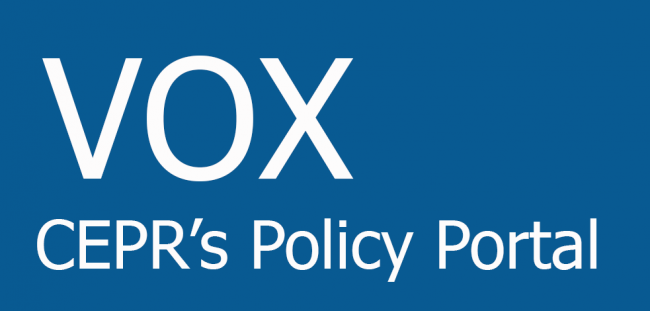Urgent reform of the EU resolution framework is needed
In this blog, the authors argue that two aspects of the European resolution framework are particularly in need of reform – the bail-in regime and the

This republished blog originally appeared on VoxEU as a column contributing to ongoing debate on reform of the EU resolution framework.

The financial industry and regulators in the EU seem to have converged on the following:
- Unlike in 2007-2008, the Covid crisis has not affected banks, at least not so far. This is explained by the fact that they were overall better capitalised than in the previous crisis and that governments have issued strong support to companies in various forms.
- Once moratoria and other support measures are unwound, European banks will likely be confronted by a wave of non-performing loans (Kasinger et al. 2021). This would require higher provisions and would exert downward pressure on already weak profits.
- If these risks were to increase, a wave of banking crises cannot be ruled out.
This column starts from this consensus and from the conviction that the existing European resolution framework, an essential part of the European banking union, is still largely deficient.
In our view, two aspects of the European resolution framework are particularly in need of reform: the bail-in regime and the resolution mechanism for cross-border banks.
The bail-in regime
To reduce the likelihood of bailouts, the 2014 Banking Recovery and Resolution Directive (BRRD) insists on a bail-in of 8% of a bank’s balance sheet, even under ‘extreme systemic stress’, as a necessary condition (1 since January 2016) for access to the Single Resolution Fund or even national public money. While the 8% rule is non-negotiable, financial instability concerns allow resolution authorities to exempt, next to secured liabilities, interbank debt expiring within seven days. This flexibility is limited, however, since: (1) the resolution outcome should respect the ‘no-creditor-worse-off’ (than in bankruptcy) principle; and (2) priority is (retroactively) granted to natural persons and SMEs over other unsecured claims (and among those, priority is granted to the deposit insurance fund).
Together, these two principles put ‘wholesale deposits’ at greater risk by (retroactively) making them junior to (uninsured and, even more, insured) retail deposits. This is a paradox, since the post-Lehman crisis showed that wholesale depositors ran much faster than retail ones. Aware of this risk, the BRRD mandates the Single Resolution Board to impose Minimum Requirements of own funds and Eligible Liabilities (MREL) targets that are specific to each bank. The problem is that, so far, many European banks do not have sufficient subordinated MREL claims, with the result that the 8% rule cannot be implemented without risking financial instability. So, the banking union has in theory a stricter bail-in regime than the one recommended globally by the Financial Stability Board (FSB), but one that it cannot implement in reality. In fact, to this day, the 8% bail-in rule has never been applied (in the Banco Popular Español case, only subordinated claims were bailed-in, as already prescribed by the 2013 State Aid guidelines).
Cross-border banks
Consolidation of the banking sector is, in principle, desirable as a vehicle for financial integration and as a potential driver of efficiency in EU banking. However, cross-border banks today are a potential source of financial stability risk. Intra-group (and liquidity) exposures are often exempted from large exposure limits by supervisors and could therefore become a conduit for cross-border contagion, as was the case for the interbank market during the global financial crisis. This problem is partly linked to a political stalemate involving countries which are home to the holdings and those which host the subsidiary (the so-called ‘home-host’ debate). At the core of this discussion is the concern that cross-border consolidation will present an unsurmountable challenge for orderly resolution involving national authorities from several jurisdictions due to conflicting interests.
How can we improve the current situation in these two areas?
Improving the bail-in regime
If Europe wants to enforce the 8% rule, 8% of the balance sheet of banks must be composed of long-term subordinated funds (equity and contingent and non-contingent subordinated long-term debt). The BRRD created a significant problem of sequencing: it imposed a bail-in threshold before allowing banks to build up enough long-term subordinated bail-inable claims.
By contrast, the bail-in rule promoted by the FSB, which applies only to global systemically important banks (G-SIBs), only kicks in after these banks have sufficient total loss-absorbency capacity (TLAC). Moreover, the rule ‘only’ imposes a new solvency ratio rather than an explicit restriction on bailouts. But while it ‘looks’ less ambitious than the BRRD regime, it has one big advantage: it is much more credible.
The 2019 BRRD revision made some progress by introducing two important innovations:
- stricter subordinated MREL requirements for banks whose balance sheets are larger than €100 billion (with a transition until 2024), and
- the ability for national resolution authorities to go below that number.
These points are useful but insufficient. Including specific senior claims in MREL does not protect other senior unsecured claimholders, because bail-in should in principle be proportionally applied to all claims in a given priority class. Therefore, our recommendation is to go further and say that MREL should only consist of claims subordinated to non-MREL claims for all banks equal to at least 8% of their balance sheet, and that the 8% rule can apply only when this is done. Only this will prevent potential panics, because the ‘no bailout before 8% bail-in even under extreme stress’ rule is probably more credible/rigid in the euro area context than in a ‘normal country’, because of the higher aversion to bailouts mentioned above.
Another reason why the 2019 BRRD revision is insufficient is that it allows, but does not impose, national resolution authorities to accelerate MREL requirements for banks with less than €100 billion balance sheets. This means that the 8% rule remains inapplicable in large countries with many small banks, like Germany and Italy, and in small countries where banks are generally of small size.
But the bigger problem is the transition. Raising subordinated funding to 8% of the balance sheet would be very costly for some banks, especially smaller ones that may have a hard time raising subordinated debt in a way that would not be too costly. Even the new BRRD, which only goes part of the way, implies a significant capital raising exercise (which explains the long transition period).
We understand that, politically, the 8% rule is ‘sacred’ and is partly motivated by an aversion to turning the banking union into a transfer union, with the aggravating circumstance that bank bailouts are (understandably) not the most popular use of public money. The paradoxical result, however, is that in practice, because of the sequencing problem, it has got in the way of bank resolution and bail-ins since the introduction of the BRRD. It would be much better to agree on a path towards 8%, say with a lower amount xt% at year t, and to replace the 8% rule by an xt% rule, possibly requiring that bailouts that do not satisfy the 8% rule have to be covered by national rather than European money, to make it politically acceptable. Quantifying this transition path in the current uncertain times is beyond the scope of this column.
Solving the home-host impasse
In principle, the creation of the banking union and the establishment of the Single Resolution Board (SRB) should have solved the coordination problems between national authorities that typically plague cross-border resolution, especially when the single-point of entry (SPE) resolution strategy is chosen, which is the case for most banking groups in the banking union countries.
In reality, ‘host’ countries in the banking union continue to ring-fence foreign subsidiaries operating within their jurisdiction, which “defeats the purpose of the Banking Union” (Philippon and Salord 2017). This situation reflects a lack of trust in the system. In particular, small countries like Belgium or Luxembourg, which host important subsidiaries of foreign banks headquartered in larger euro area countries, fear ‘unfair’ treatment in case of resolution (e.g. Dewatripont et al. 2021).1 These host countries therefore insist on keeping their Options and National Discretions (ONDs) on liquidity and intra-group exposures, to the chagrin of home countries and European authorities. Of course, one should not a priori doubt the SRB’s aim to try and ensure fairness between countries. But the devil will be in the details.
Better to improve the rules of the game to constrain discretion and (perceived or actual) current potential bias by adopting a fully euro area-wide approach to resolution of cross-border banks. To do this, the simplest solution is to have resolution focused on burden-sharing at the holding level by adopting a structural subordination approach, which would separate business functions in operating subsidiaries from the pure financing functions of holding companies. Under the dominant SPE strategy, losses in subsidiaries are first transferred up to the holding company. If it fails or risks failing as a result, the group has to be resolved, and the holding company is bailed-in using appropriately calibrated pre-existing eligible liabilities (MREL). This would reassure host countries (which would then have to drop their ONDs), because losses would occur ‘at the top’, in the home country, and the group would stay together.
This solution is also the economically efficient thing to do: to avoid moral hazard, the decision-maker should be the residual claimant. This principle is consistent with the whole idea of prudential regulation, solvency ratios and no bailouts. And it is moreover consistent with ideas developed at the FSB by the architects of the FSB resolution principles (see Tucker 2018, who recommends structural subordination).
Conclusion
Our double proposal would strengthen the banking union by (1) making resolution of individual banks more credible, and (2) allowing cross-border banking to better contribute to the needed consolidation of the sector by trying to reconcile the concerns of countries motivated by a very heterogenous euro area banking sector (involving, in some cases, countries with many small and fragile banks as well as countries home to cross-border holdings and those which host subsidiaries). And while it would not fully prepare the banking union for a systemic banking crisis, it would help structure the urgently needed discussion on the nature of credible solutions to manage systemic crises (the nature of bail-in, the type and conditionality of (national and European) bailouts, and so on).
References
Ahmad, I, T Beck, K D’Hulster, P Lintner, and F D Unsal (2019), "Banking Supervision and Resolution in the EU – effects on small host countries in Central, Eastern and South Eastern Europe", World Bank, FinSAC.
Dewatripont, M, M Montigny and G Nguyen(2021), “When trust is not enough: Bank resolution, SPE, Ring-fencing and group support”, mimeo.
Garicano, L (2020) “Two proposals to resurrect the Banking Union: The Safe Portfolio Approach and SRB+”, VoxEU.org, 17 December.
Kasinger, J, J-P Krahnen, S Ongena, L Pelizzon, M Schmeling and M Wahrenburg (2021), “Preparing for a wave of non-performing loans”, VoxEU.org, 1 April.
Philippon, T and A Salord (2017), Bail-ins and Bank Resolution in Europe: A Progress Report, Geneva Reports on the World Economy Special Report 4.
Tucker, P (2018), “Resolution policy and resolvability at the centre of financial stability regimes ?”, paper presented at the IADI/BIS FSI conference, Basel, 1 February.



